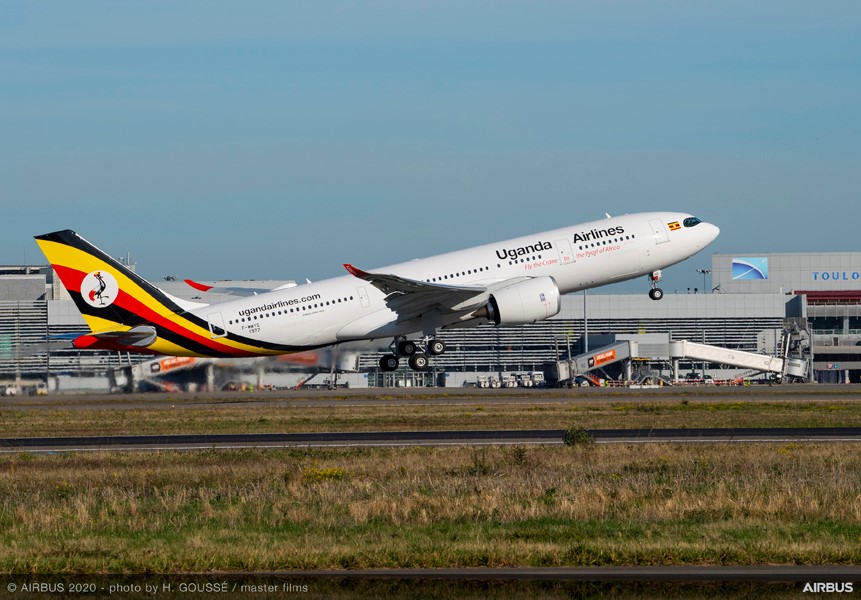 Rolls-Royce today joined Airbus and Uganda Airlines to celebrate the delivery of the airline’s first widebody aircraft, an Airbus A330neo powered by Rolls-Royce Trent 7000 engines.
Rolls-Royce today joined Airbus and Uganda Airlines to celebrate the delivery of the airline’s first widebody aircraft, an Airbus A330neo powered by Rolls-Royce Trent 7000 engines.
The Airbus A330neo delivery flight from Airbus’ facility is expected to leave Toulouse at 01.00hrs CET and arrive in Entebbe early morning on the 22nd December. The aircraft has been named Mount Elgon.
Cornwell Muleya, CEO of Uganda Airlines, said: “We are delighted to welcome our new Rolls-Royce powered Airbus A330neo into service. The efficiencies of this aircraft, together with Rolls-Royce’s Trent 7000 engines, will help us deliver a great value offering to our passengers.”
John Kelly, Senior Vice President Customers, Rolls-Royce, said: “We are delighted that Uganda Airlines selected the Rolls-Royce powered Airbus A330neo. Uganda Airlines has a bold vision, and we are proud to be part of that future. This excellent aircraft with Trent 7000 engines will help Uganda Airlines create new connections across Africa and the rest of the world. This delivery adds another new Rolls-Royce customer in Africa, which is a very important market for us.”
The exclusive engine for the A330neo, the Trent 7000 is the seventh in a Trent family that has now accumulated more than 150 million engine flying hours. The Trent 7000, which first entered service in November 2018, draws on more than 50 million flying hours of experience from the Trent 700, the engine of choice for the original version of the A330.
The 68-72,000lb thrust Trent 7000 helps the A330neo reduce environmental impact with a 14% improvement in fuel burn per seat (compared to the A330ceo) and a significant reduction in noise.
Trent 7000 – incredible engineering by numbers:
– The front fan is just under 10 ft feet across (9.3) and draws in up to 1.3 tonnes of air every second at take-off.
– Each one of the engine’s 20 titanium fan blades is hollow, with an internal girder structure to maximise strength. They are created using a process called super-plastic forming and diffusion bonding, where a “sandwich” of titanium is heated in an oven while gas is blown into it to ‘inflate’ the blade.
– High-pressure turbine blades inside the engine rotate at 12,500 rpm, with their tips reaching 1,200mph, nearly twice the speed of sound.
– These high-pressure turbine blades operate in an environment where temperatures can exceed 2,000C, higher than the melting point of the blade itself. To protect them, each blade has tiny air holes in it from which “cooling air” (at 700C) is blown to cover the blade’s surface.
African Eye Report


